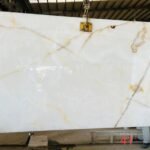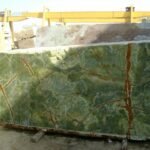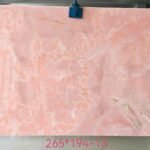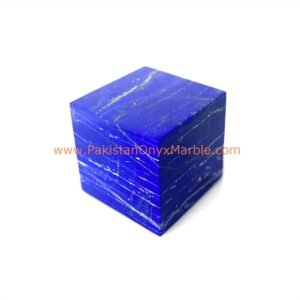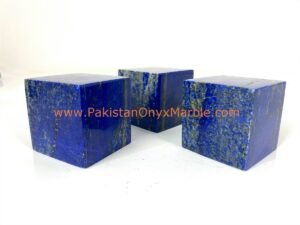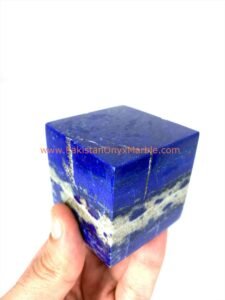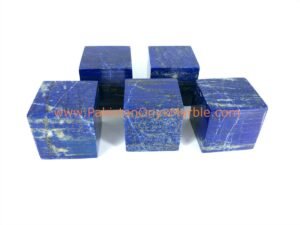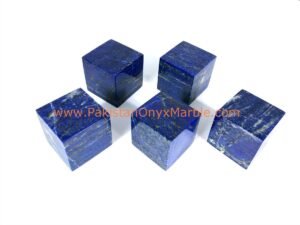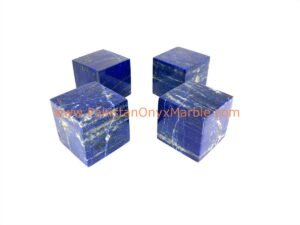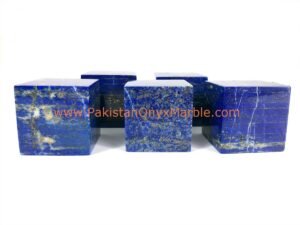Lapis Lazuli Cubes
Lapis Lazuli: A deep blue semiprecious stone with a history dating back thousands of years, prized for its vibrant color and used in various forms of art, jewelry, and decorative items.
Cube: A three-dimensional geometric shape with six square faces, all of equal size, forming right angles with each other.
Gemstone: A precious or semiprecious stone that is cut and polished for use in jewelry or other decorative items.
Jewelry: Accessories or adornments made from precious metals and gemstones, including lapis lazuli cubes that may be used in earrings, pendants, necklaces, bracelets, etc.
Carving: The art of shaping and creating intricate designs or sculptures by removing material from a block, often used in crafting lapis lazuli cubes into decorative pieces.
Ancient Civilization: Lapis lazuli has a long history of use by ancient civilizations, such as the Egyptians, Sumerians, and Mesopotamians, who used it for jewelry, amulets, and burial masks.
Spiritual and Metaphysical Properties: Lapis lazuli is believed to have various metaphysical properties, including promoting self-awareness, enhancing creativity, and improving communication.
Healing: Some believe that lapis lazuli has healing properties and can aid in relieving stress, enhancing mental clarity, and promoting emotional healing.
Afghanistan: Historically, one of the primary sources of lapis lazuli is the Sar-e-Sang mine in Afghanistan, where the stone has been mined for thousands of years.
Inlay: Lapis lazuli cubes are sometimes used as inlays in furniture, sculptures, or other decorative objects, adding a touch of color and luxury to the piece.
Art and Crafts: Lapis lazuli cubes are utilized by artists and craftsmen for creating unique and visually striking pieces, such as mosaics, sculptures, and paintings.
Ultramarine Pigment: Lapis lazuli has been ground into a pigment known as “ultramarine blue,” which was used in historical artworks, especially during the Renaissance period.
Symbolism: Lapis lazuli has been associated with various symbolic meanings, such as truth, wisdom, royalty, and the heavens.
Birthstone: Lapis lazuli is one of the traditional birthstones for those born in the month of September.
Color: The vibrant blue color of lapis lazuli is one of its most distinctive and sought-after features, making it a popular choice for jewelry and artistic creations.
Physical Properties of Lapis Lazuli
Classification A metamorphic rock that contains enough of the mineral lazurite to impart a distinct blue color. It may also contain significant amounts of calcite, pyrite, and minor amounts of other minerals.
Color Blue. Often with white calcite veining or mottling, and gold grains of pyrite.
Streak Blue.
Luster Dull, but polishes to a bright luster.
Diaphaneity Semi-translucent to opaque.
Cleavage None, though it may split easily along foliation or calcite veins and layers.
Mohs Hardness Varies between the 3 of calcite and the 5 to 5.5 of lazurite. Not well suited for use as a ring stone or in bracelets.
Specific Gravity 2.7 to 2.9 or more depending upon the amount of pyrite
Diagnostic Properties Blue color, association with pyrite, and hardness.
Uses Cabochons, beads, carvings, spheres, inlay, and pigments.



